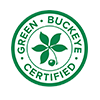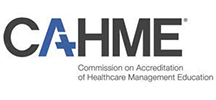Current Projects
- Impacts of Green Infrastructure on the Microbiome of Urban Stormwater: Reducing Threats to Public Health. Funded by NSF. (PI: Martin, co-PI: Lee, Winston) 2018-2020.
- Metabolomic Biomarkers of Acute and Chronic Cyanotoxin Exposure During the Promotion of Hepatic Carcinogenesis. Funded by Ohio Department of Higher Education. (PI: Knobloch, co-PI: Weghorst, Lee) 2018-2020.
- Environmental fate and persistence of microcystin in land applied drinking water treatment residuals. Funded by Ohio Department of Higher Education. (PI: Basta, co-PI: Lee, Dayton) 2018-2020.
- A comprehensive approach for evaluation of acute toxic responses after microcystin ingestion. Funded by Ohio Department of Higher Education. (PI: Lee) 2016-2018.
- Preventing the dissemination of CRE from healthcare facilities into surface waters in the US. Funded by CDC. (PI: Wittum, co-PI: Lee, Sullivan) 2017-2019.
- Preventing the dissemination of carbapenemase-producing Enterobacteriaceae from hospitals into surface waters in the US. Funded by CDC. (PI: Wittum, co-PI: Lee) 2016-2017.
- The Relationship between Human-animal Bond, Human-Animal Interactions, and Diarrheal Disease Risk in Developing Settings. Funded by OSU Collaborate and Connect (PI: Garabed, co-PI: Lee, Stull, Piperata) 2017
- Development of the MMPB method for quantifying total microcystins in edible fish tissues. Funded by Ohio Department of Higher Education. (PI: Ludsin, co-PI: Lee, Martin, Riedl, Schwartz) 2016-2018.
- Holistic Research & Monitoring to Determine Impacts of Blueprint Columbus-Clintonville. Funded by City of Columbus. (PI: Martin, co-PI: Brooks, Irwin, Lee) 2016-2022.
- Paradigm shift in understanding the ecology of cyanobacteria and toxins: virus-host dynamics in lakes. Funded by Ohio Water Development Authority. (PI: Lee) 2016-2017.
- Zoonotic Diarrheal Disease Transmission in Ethiopia. Funded by OSU International Affairs Research Grant. (PI: Lee) 2016-2017.
- Electrostatic Precipitation For Air Cleaning Of Particulate Matter Emissions At Animal Production Facilities. Funded by USDA NIFA (PI: Zhao, co-PI: Zhu, Lee, Xin) 2016-2018.
- Agricultural Energy and Environment: China-US Research and Education. Funded by OSU China Gateway Research Seed Grant (PI: Zhao, co-PI: Li, Shearer, Mancl, Lee) 2016-2017.
- Development of real-time detection of cyanotoxins in drinking and irrigation water sources using unmanned aerial vehicles and validation with laboratory measurements. Funded by Field to Faucet Initiative. (PI: Lee, co-PI: J. Gregory, CK Shum) 2015-2017
- Comprehensive Digital PCR system for monitoring harmful algal bloom and microbial contaminants in food and water. Funded by Field to Faucet Initiative. (PI: Lee) 2015-2017
- Prevention of cyanobacterial bloom formation using cyanophages. Funded by Ohio Board of Regents. (PI: Lee) 2015-2016
- Fish flesh and fresh produce as sources of microcystin exposure to humans. Funded by Ohio Board of Regents. (PI: Ludsin, co-PI: Lee, Martin, Riedl, Schwartz) 2015-2016
- Ensuring Safe Drinking Water in Lake Erie: Quantifying Extreme Weather Impacts on Cyanobacteria and Disinfection Byproducts. Funded by US EPA STAR. (PI: Lee, co-PI: Liang, Shum) 2012-2016
We study the link between historic and current extreme weather events and water quality indicators using satellite and field work data, temperature, turbidity, precipitation, water level, and ice/snow/flood extents, (2) improved understanding of the links between extreme weather events and the source and finished water quality including cyanobacteria densities, cyanotoxins, DBPs, and nutrient concentrations, and (3) the modeling and prediction of adverse impacts to source and finished water to understand the future impact of climate-change induced extreme weather events on water safety in Lake Erie. -
Ecosystem services of wetlands for protecting microbial water quality at Ohio Beaches from contamination sources. Funded by Ohio Water Development Authority. (PI: Lee) 2014-2016
Wetlands are known for treating nutrients effectively, but there is a concern attracting lots of wildlife (e.g. geese) that shed potential pathogens. This project is focusing on the ecosystem services of wetlands in reducing enteric pathogens (Shiga toxin-producing bacteria), emerging pathogens (Arcobacter), nutrients (N and P), cyanobacterial blooms, and their impact on the adjacent bathing beaches in Lake Erie.
Recently Completed Projects
- Rapid and Sensitive Microcystin Detection. Funded by Lake Erie Protection Fund. (PI: Lee) 2014-2015
The objective of this study is to develop a novel assay for rapid and sensitive microcystin detection, which is more economically and technically feasible for routine toxin monitoring. The newly developed method will be compared with traditional ELISA and HPLC methods using water samples from western and central Lake Erie.
- Pilot Study Exploring Spatial Relationship between Cyanobacteria Blooms and Cancer Cases. Funded by Dean's Discovery Fund (PI: Lee, co-PI: Shum) 2014-2015
We are studying spatial distribution of cyanobacterial bloom in US using satellite remote sensing and spatial hot spots for different cancer types in order to evalute the relationship between cyanobacterial blooms and cancer rates.
- Rapid detection of microcystin and understanding factors affecting Cyanotoxin production at inland Ohio Beaches. Funded by Ohio Water Development Authority. (PI: Lee) 2012-2014
The specific aims of this project are to develop a rapid system for predicting microcystin levels by pigment and toxin-producing gene measurements. The field data with water quality parameters will provide understanding the microbial ecology of cyanotoxin production.
- Surface water quality and ecosystem health with shale energy development. Funded by USGS. (PI: Toman, co-PI: Lee) 2014-2015
This research will identify the impacts of shale energy development to surface water quality and ecosystem health through monitoring suspended sediment and microbial communities in paired watersheds in Noble county, Ohio.
- Migration and household water management practices: An interdisciplinary examination of cholera outbreaks in urban Cameroon. Funded by OSU Institute of Population Research. (PI: Moritz, co-PI: Lee, Garabed, Tien, Xiao, Pippera) 2013-2014
- Impact of Climate Change on Public Health in the Great Lakes due to Harmful Algae Blooms. Funded by Ohio Sea Grant. (PI: Martin, co-PI: Ludsin, Lee) 2012-2014
- Mitigating Coastal Vulnerability and Sustainability of Water Resource, Security and Public Health under the Influence of Climate Change. Funded by OSU Environmental Science Network Seed Grant. (PI: Lee, co-PI: Shum, Martin, Moritz, Durand, Moore) 2012-2013
- Optimizing Disinfection for Onsite and Small Community Wastewater Treatment. Funded by Ohio Water Development Authority. (PI: Mancl, co-PI: Lee) 2013-2015
- Microbial Removal Efficiency of Airborne Portable Water System. Funded by UTA Aerospace Systems. (PI: Lee) 2013-2014
- Geospatial Study of Disease and Water Quality. Funded by Ohio Department of Health (PI: Lee) 2014
- Innovative Rapid Identification of Lake Erie Fecal Sources. Funded by US EPA Great Lakes Restoration Initiative. (PI: Lee, co-PI: Lichtkoppler, Zondag) 2010-2012
Lake Erie beaches are among the Nation’s most impaired. Despite investments exceeding two billion dollars in regional wastewater infrastructure, fecal contamination remains a problem. Additionally, improvement efforts at Lake Erie beaches may be getting thwarted by fecal contributions by waterfowl. With a need for data-driven remediation plans to maximize source reductions at Ohio beaches, two rapid molecular tools are being developed and employed to quantify human- and waterfowl-specific fecal indicators. Routine sanitary and water quality surveys performed in tandem with molecular methods will elucidate human versus waterfowl impacts on water safety at three Lake Erie beaches.
- Characterization of Transport of Avian-medicated Pathogen in Western Lake Erie Waters. Funded by Ohio Sea Grant. (PI: Lee) 2012-2013
- Improving Local Food Security and Promoting Health in Urban Environments through Window-based Hydroponic Food Production Systems. Funded by OSU Food Innovation Center Seed Grant. (PI: Lee, co-PI: Grewal, Bohrerova) 2012-2013
- Plant Stress and its Impact on Internalization of Bacteria and Viruses in Fresh Produce. Funded by OSU Food Innovation Center Research Award. (PI: Lee, co-Investigator: Li, Kleinhenz, Gardner) 2010-2011
Internalization of microbial pathogens within fresh produce has become a critical issue because it would preclude effective removal by washing and sanitizers. We are studying the impact of plant stress (due to extreme weather events and infection of plant pathogens) on the internalization of Salmonella and hepatits A virus in lettuce and green onion.
- Multiple Genetic Marker Approach for Understanding the Impact of Land Use and Climate Change on Microbial Contamination in Water. Funded by OARDC SEED grant. (PI: Lee, co-investigators: W. Dick and R. Moore)
The goal of this project is to identify microbial contaminants when the land use is changed along the Upper Sugar Creek watershed, one of the most impaired watershed in Ohio, and to conduct preliminary studies of how changes in storm intensity impact enteric pathogen transport and their fate.
- Does enterococci qPCR predict pathogen levels? Funded by Lake Erie Protection Fund. (PI: Lee) 2011-2012
We are studying if the rapidly measured fecal bacteria with qPCR can predict the presence of human pathogens in Lake Erie beaches. The pathogens that are investigating are Arcobacter, human enterovirus and human adenovirus.
- Rapid Detection of viable B. fragilis in Lake Erie beaches. Funded by Lake Erie Protection Fund (PI: Lee) 2010
This project investigates the significance of Bacteroides as a new human-specific fecal indicator in Lake Erie, compare its relationship with the current fecal indicator, E. coli, and develop rapid methods (IMS/ATP and qPCR). The outcomes of this study will provide practical information to support the new criteria for recreational microbial water quality that will be revised by US EPA by 2012. The rapid methods will directly support ‘same-day beach advisory systems’ that nationwide public health agencies pursue.
- Protecting Public Health at Ohio Inland Beaches: Water Quality Indicators for Recreational Microbial Exposure. Funded by Ohio Water Development Authority (PI: Buckley, co-PI: Lee) 2009-2011
This project examines the predictive association between chemical and physical water quality indicators relative to microbial load at Ohio inland beaches and reported symptoms among beach goers.
- Health risks from indoor environment-P. aeruginosa transmission from water and aerosol. Funded by OSU CCTS PHPID Joint Pilot Research Grant (PI: Lee, co-PI: Wozniak, Buckley) 2009-2011
We are developing a rapid and sensitive method to concentrate and detect P. aerguginosa that are transmitted through various transmission modes such as nosocomial route, waterborne- and airborne transmission in indoor environment. The findings from this project can be applied to other pathogens having similar transmission modes such as Legionella pneumophila.
- Pressure-Ohmic Thermal Sterilization (POTS). Funded by Food Innovation Center Research Award Competition (PI: Balasubramaniam, co-investigator: Sastry, Lee) 2010-2011
We investigated the combined effects of pressure, electric field and heat on inactivation of pressure-thermal resistant Bacillus amyloliquefaciens and Bacillus stearothermophilus spores in food (puree and juice).
- Ozone as a clean technology for environment and food industry: its impact on water consumption and wastewater quality. Funded by Ohio Water Development Authority (PI: Lee, co-PI: Yousef, Bohrerova) 2009-2010
Fresh produce is one of the major sources for foodborne illness outbreaks. The contamination by pathogens caused by the application of improperly treated manure, flood irrigation with contaminated water or surface runoff. Fresh production practices commonly include a rinse step using ~200 ppm of chlorine. This project investigates the efficiency of ozone as a clean technology to improve food industry wastewater quality, reduce water consumption by improving the reusability of the processing water, minimize impact on environment while inactivating foodborne pathogens effectively.
- Near Real-time detection of bacterial spores in food. Funded by CAPPS (PI: Lee) 2009-2010
Presence of spores in food, including food ingredients, increases the potential for food-borne disease and food spoilage. Spores are more resistant to most types of disinfection. As non-spore forming background microorganisms are efficiently removed by food processing procedure, the shelf life of food products is more significantly determined by the presence of spores. This is a project to develop rapid detection system (~ 30 min) for targeting bacterial spores that cause food spoilage and poisoning. We are developing a streamlined procedure that rapidly assesses viable spores in water, beverage packaging and food power and the identification of the spore origins.
- Microbial Contamination From Failed Septic Tank Systems and Its Impact On Water Safety. Funded by Dean’s Undergraduate Research Fund (Burrowes’ undergraduate research) 2009-2010
Ohio is one of the states with the most household sewage treatment systems (HSTS) that discharge human waste into streams and watersheds. We are studying the impact of these failed HSTS on receiving water body, Olentangy River, and health risks by determining chemical and microbial water quality and genetic markers.



